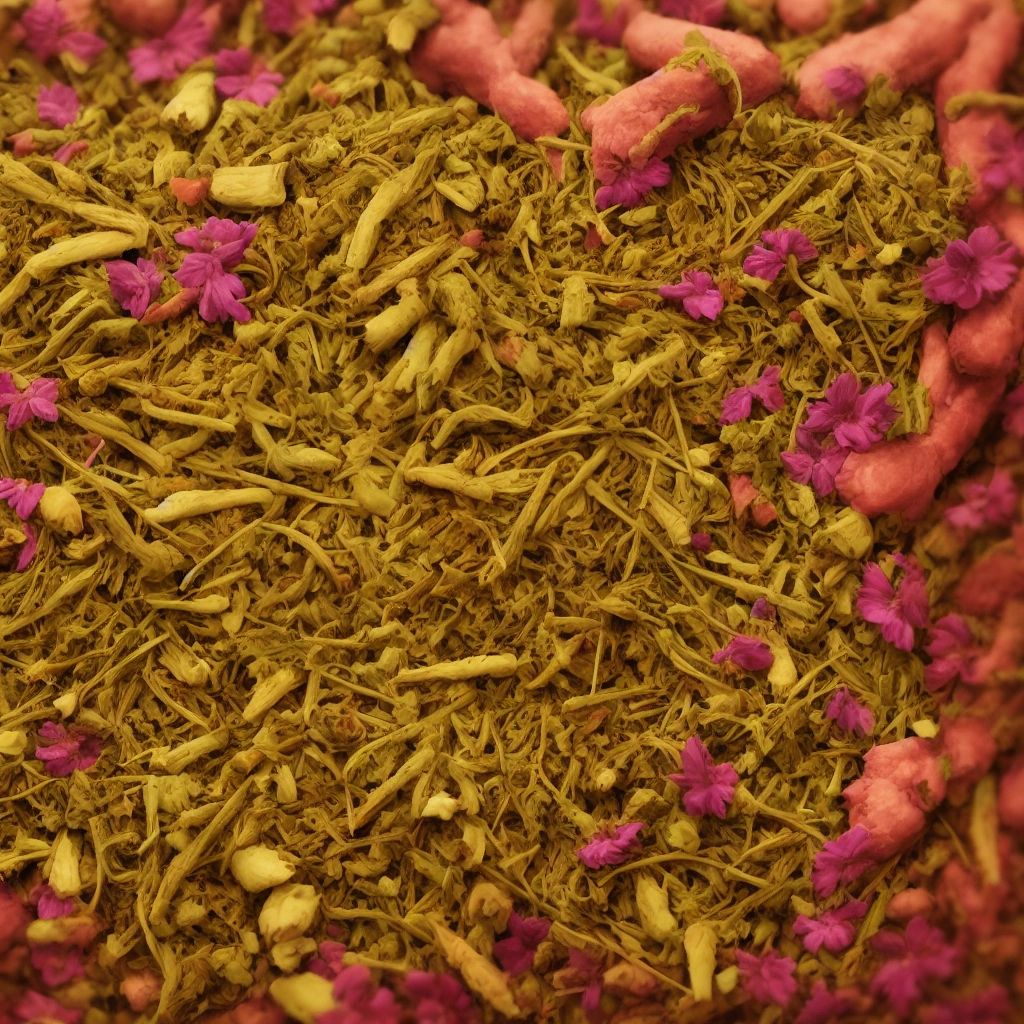Brewing Wellness: Crafting Herbal Teas for Gut Health
In an era defined by an increasing awareness of gut health and its profound impact on overall well-being, herbal teas are rapidly gaining recognition as a palatable and accessible natural remedy. This comprehensive guide delves into the art and science of developing novel herbal tea blends specifically designed to promote gut health, offering a roadmap for both passionate tea enthusiasts and seasoned industry professionals. From exploring the science-backed benefits of specific herbs celebrated for their digestive properties to navigating the complexities of sustainable ingredient sourcing, precise blend formulation, and the ever-evolving landscape of market trends, this guide provides valuable insights for those seeking to harness the power of tea for wellness.
It is a deep dive into creating healthy drinks that nourish from the inside out. At the heart of this movement lies the understanding that the gut microbiome plays a pivotal role in various aspects of health, including immunity, mood regulation, and nutrient absorption. Herbal teas, with their diverse range of bioactive compounds, offer a gentle yet effective way to support a balanced gut environment. Unlike conventional medicines, herbal remedies often work synergistically with the body’s natural processes, promoting healing and preventing imbalances.
The appeal of herbal tea also stems from its accessibility; it’s a comforting ritual that can be easily incorporated into daily routines, making it a sustainable approach to long-term digestive health. This positions herbal tea blends as a key player in the broader wellness market. Developing effective herbal tea blends for gut health requires a multifaceted approach, starting with a thorough understanding of the herbs themselves. Certain herbs, such as ginger and peppermint, have well-documented digestive benefits, while others, like chamomile and lemon balm, offer calming properties that can indirectly support gut function by reducing stress.
The careful selection and combination of these herbs, informed by both traditional knowledge and modern scientific research, is crucial for creating blends that are both palatable and therapeutically effective. Moreover, the quality of the herbs used significantly impacts the final product; sourcing organic, sustainably grown ingredients ensures that the tea is free from harmful pesticides and contaminants, maximizing its health benefits. Beyond the selection of individual herbs, the art of blending lies in creating harmonious flavor profiles that encourage regular consumption.
A tea that is both beneficial and enjoyable is more likely to become a staple in one’s daily routine, leading to sustained improvements in gut health. This involves careful consideration of the taste, aroma, and mouthfeel of each ingredient, as well as an understanding of how different flavors interact with one another. For example, the spicy warmth of ginger can be balanced with the cooling sweetness of licorice root, while the earthy notes of dandelion root can be complemented by the bright citrus flavor of lemon peel.
By mastering the art of flavor pairing, tea blenders can create truly exceptional and effective herbal tea blends for gut health. Ultimately, the success of any herbal tea blend depends on its ability to meet the needs and preferences of consumers. As the demand for natural health solutions continues to grow, the tea industry is presented with a unique opportunity to innovate and create products that are both delicious and beneficial. This requires a deep understanding of market trends, consumer behavior, and the evolving science of gut health. By staying informed and embracing a holistic approach to product development, tea brands can position themselves as leaders in the burgeoning market for herbal teas and contribute to the overall well-being of their customers. This comprehensive guide serves as a roadmap for navigating this exciting landscape, offering insights and guidance for creating truly transformative herbal tea blends.
The Science of Soothing: Exploring the Gut Health Benefits of Herbs
Herbs have been revered for centuries for their therapeutic properties, and their application in promoting gut health is increasingly supported by scientific research. Ginger, chamomile, and peppermint are prime examples of botanicals that offer significant digestive benefits. Ginger, with its potent anti-inflammatory compounds like gingerols and shogaols, can effectively soothe the gut lining, reducing bloating and discomfort. Studies have shown ginger’s efficacy in alleviating nausea and improving gastric emptying, contributing to overall digestive well-being. For instance, a 2019 study published in the journal Phytomedicine demonstrated ginger’s positive impact on reducing symptoms of functional dyspepsia.
Incorporating ginger into herbal tea blends can offer a warming and comforting way to support healthy digestion. Chamomile, known for its gentle and calming properties, has long been used to ease indigestion and promote relaxation. Compounds like apigenin contribute to chamomile’s anti-inflammatory and antispasmodic effects, helping to relieve stomach cramps and bloating. A cup of chamomile tea after meals can be a soothing ritual that supports healthy digestion and promotes a sense of calm. Furthermore, chamomile’s relaxing properties can indirectly benefit gut health by reducing stress, a known trigger for digestive issues.
Peppermint, with its refreshing flavor and potent menthol content, offers relief from various digestive ailments, particularly irritable bowel syndrome (IBS). Studies have shown that peppermint oil can relax the intestinal muscles, reducing abdominal pain and discomfort associated with IBS. Its antispasmodic properties can also help alleviate bloating and gas. Beyond these well-known herbs, other botanicals like fennel, licorice root, and marshmallow root also offer promising benefits for gut health. Fennel, with its anethole content, can act as a carminative, reducing gas and bloating.
Licorice root possesses anti-inflammatory properties that can soothe the gut lining, while marshmallow root provides a protective mucilage that can coat and protect the digestive tract. Incorporating a diverse range of such herbs into tea blends can offer a synergistic approach to supporting gut health, addressing various aspects of digestive function. The art of blending these herbs lies in achieving both flavor balance and therapeutic efficacy. By carefully selecting and combining herbs with complementary properties, one can create delicious and functional tea blends that promote optimal digestive health. Moreover, the growing consumer interest in natural health remedies has propelled the herbal tea industry forward, with gut health emerging as a key area of focus. This trend underscores the increasing recognition of the vital role of gut health in overall well-being and the potential of herbal teas as a gentle yet powerful tool for supporting digestive wellness.
Sourcing for Success: Finding Premium and Sustainable Herbal Ingredients
“Sourcing premium, sustainable ingredients is paramount to developing effective and ethical herbal tea blends for gut health. The efficacy and credibility of your final product rests heavily on the quality of its components. Partnering with reputable suppliers who prioritize organic farming practices and fair trade principles ensures the purity, potency, and ethical sourcing of the herbs, contributing to both consumer trust and a healthier digestive system. This careful selection process also minimizes the risk of contamination from pesticides, herbicides, and heavy metals, which can disrupt gut flora and diminish the overall health benefits of the tea.
Look for certifications like USDA Organic and Fair Trade to validate a supplier’s commitment to these standards. Identifying reliable sources requires thorough research and due diligence. Start by exploring established herb suppliers and growers with a proven track record in quality and sustainability. Seek out suppliers who can provide detailed information about their cultivation methods, harvesting practices, and quality control measures. Transparency is key. Ask about their testing procedures for purity and potency, including third-party lab results.
For instance, reputable suppliers will readily share information about their testing for heavy metals, pesticides, and microbial contamination. This commitment to transparency demonstrates a dedication to quality and builds trust with both manufacturers and consumers. Evaluating ingredient quality goes beyond certifications and supplier reputation. Engage your senses. High-quality herbs should possess vibrant colors, distinct aromas, and characteristic textures. Consider factors such as the herb’s origin, harvesting season, and processing methods. These elements can influence the concentration of beneficial compounds, like polyphenols and flavonoids, that contribute to gut health.
For example, ginger harvested at its peak season will typically have a higher concentration of gingerol, a key bioactive compound with anti-inflammatory properties beneficial for gut health. Furthermore, proper drying and storage techniques are essential for preserving the integrity and potency of the herbs over time. Oxygen and moisture can degrade the quality of herbs, so look for suppliers who utilize appropriate packaging and storage methods to maintain optimal freshness. Building strong relationships with your suppliers is crucial for long-term success in the herbal tea industry.
Open communication and collaboration can lead to a deeper understanding of the herbs’ unique properties and potential benefits. Visiting farms and processing facilities firsthand allows you to assess the quality of the growing environment and observe the handling processes directly. This fosters trust and transparency, ensuring that the ingredients you source align with your brand’s values and commitment to gut health. Direct engagement with growers also provides valuable insights into sustainable agricultural practices and the challenges faced by farmers, fostering a more ethical and responsible approach to sourcing.
Ultimately, the pursuit of premium, sustainable ingredients not only enhances the quality and efficacy of your herbal tea blends but also contributes to a more sustainable and equitable tea industry. Finally, consider the specific gut health benefits you wish to target when selecting herbs for your blends. Research the scientific literature and traditional uses of different herbs to identify those best suited for your formulation goals. For example, if you’re formulating a tea to support digestion, you might consider herbs like peppermint, fennel, or chamomile, known for their soothing and carminative properties. If you’re targeting gut inflammation, herbs like ginger, turmeric, and marshmallow root might be more appropriate choices. By carefully selecting ingredients based on their specific properties and intended health benefits, you can create targeted and effective herbal tea blends that cater to the diverse needs of health-conscious consumers seeking natural solutions for gut wellness.”
The Art of Blending: Mastering Flavor Profiles for Optimal Taste and Efficacy
Flavor profiling and blend formulation are crucial aspects of crafting a successful herbal tea, especially when targeting specific health benefits like gut health. Balancing the flavors of different herbs to create a palatable and enjoyable experience requires careful consideration, transforming a simple beverage into a daily ritual. This process involves understanding not only the individual taste profiles of each herb but also how they interact and complement one another, ultimately optimizing both taste and efficacy.
A well-formulated blend considers the subtle nuances of each ingredient, ensuring a harmonious flavor profile that encourages regular consumption and maximizes the potential health benefits. The art of blending begins with a deep understanding of each herb’s flavor profile. For instance, peppermint offers a refreshing coolness, while ginger adds a spicy warmth. Chamomile provides a gentle, floral sweetness, whereas licorice root contributes a distinct earthy sweetness. Understanding these individual characteristics allows for strategic combinations that cater to a range of palates.
Consider a blend targeting gut health: the sharpness of ginger can be balanced by the soothing qualities of chamomile, creating a complex yet comforting flavor. Adding a touch of licorice root can further enhance the sweetness and provide a grounding element. Such a blend not only addresses digestive discomfort but also provides a delightful sensory experience. Furthermore, the efficacy of an herbal tea blend for gut health depends on the synergistic interplay of its ingredients.
Certain herbs, like fennel and anise, are known carminatives, helping to relieve gas and bloating. Others, like marshmallow root, possess mucilaginous properties that can soothe irritated intestinal linings. Combining these herbs in appropriate proportions can create a blend that effectively addresses multiple aspects of gut health. For example, a tea combining peppermint, fennel, and ginger could effectively target indigestion, bloating, and nausea, providing comprehensive digestive support. Beyond flavor pairing, the selection of high-quality ingredients is paramount.
Sourcing organically grown herbs ensures that the final product is free from harmful pesticides and herbicides, which can negatively impact gut health. Furthermore, understanding the origin and processing of each ingredient contributes to the overall quality and ethical considerations of the final blend. Transparency in sourcing not only builds consumer trust but also ensures the potency and purity of the herbs, maximizing their potential health benefits. Finally, continuous experimentation and refinement are essential to mastering the art of blending.
Keeping a detailed record of each blend, including the specific herbs used, their proportions, and the resulting flavor profile, allows for iterative improvements and consistent quality. Taste testing and gathering feedback from target consumers can provide valuable insights into flavor preferences and potential adjustments needed to optimize both palatability and efficacy. This iterative process ensures that the final product not only supports gut health but also offers a truly enjoyable and satisfying tea-drinking experience, encouraging consistent consumption and long-term wellness benefits.
Market Insights: Navigating the Evolving Landscape of Herbal Teas for Gut Health
The herbal tea market is experiencing a surge in consumer interest, particularly within the gut health niche. Understanding current market trends and consumer preferences is essential for developing products that resonate with target audiences. This section will analyze market dynamics, consumer behavior, and emerging trends in the herbal tea industry, providing crucial insights for brands seeking to capitalize on the growing demand for gut-friendly beverages. The rising awareness of the gut microbiome’s influence on overall wellness has fueled this expansion, turning herbal tea blends into a sought-after category within the broader landscape of healthy drinks.
One significant trend is the increasing consumer demand for transparency and traceability in the tea industry. Individuals are no longer solely focused on the purported health benefits of herbal remedies; they also want to know where the ingredients are sourced, how they are processed, and whether sustainable practices are employed. This heightened scrutiny has led to a surge in popularity for tea brands that prioritize organic farming, fair trade principles, and eco-friendly packaging. For example, brands highlighting their partnerships with small-scale farmers who use regenerative agriculture are seeing increased consumer loyalty.
This shift reflects a broader movement towards conscious consumerism, where purchasing decisions are driven by ethical and environmental considerations. Another key market insight revolves around the specific herbal ingredients that are gaining traction for their gut health benefits. Ginger, turmeric, chamomile, and peppermint remain popular choices, but lesser-known herbs like licorice root, marshmallow root, and slippery elm are also emerging as valuable additions to tea blends. These herbs are traditionally used to soothe the digestive tract, reduce inflammation, and promote overall gut health.
Innovative tea blends are now combining these traditional herbal remedies with adaptogens like ashwagandha and medicinal mushrooms, creating synergistic formulas that address both gut health and stress management. The growing body of scientific research supporting the efficacy of these herbs is further driving consumer interest and demand. Consumer behavior in the herbal tea market is also being shaped by the increasing availability of information and online communities dedicated to natural health and wellness. Social media platforms and online forums serve as valuable resources for individuals seeking information about herbal remedies, sharing personal experiences, and discovering new tea blends.
Influencer marketing and collaborations with health and wellness experts are also playing a significant role in shaping consumer preferences and driving sales. Brands that actively engage with their target audience online, provide educational content, and foster a sense of community are more likely to succeed in this competitive market. Finally, the growing demand for convenient and on-the-go options is influencing product development in the herbal tea industry. Ready-to-drink herbal tea beverages, tea bags with innovative packaging, and concentrated herbal extracts are gaining popularity among busy consumers seeking a quick and easy way to support their gut health. The rise of functional beverages, which combine the benefits of herbal tea with other health-promoting ingredients like probiotics and prebiotics, is also a notable trend. As the herbal tea market continues to evolve, brands that can adapt to changing consumer needs and offer innovative, convenient, and effective products will be best positioned for long-term success.
Regulatory Compliance: Ensuring Safety and Transparency in Herbal Tea Production
Navigating the regulatory landscape for herbal tea products requires a thorough understanding of specific labeling requirements, quality control standards, and potential legal pitfalls. This is crucial not only for ensuring compliance and avoiding penalties but also for building consumer trust and establishing a reputable brand within the burgeoning gut health and wellness market. This section provides a comprehensive overview of relevant regulations, offering practical guidance on best practices for product labeling, safety, and transparency. In the United States, the Food and Drug Administration (FDA) regulates herbal teas under the Federal Food, Drug, and Cosmetic Act.
Herbal teas are generally recognized as safe (GRAS) but must adhere to specific labeling guidelines, including accurate ingredient lists, allergen warnings, and net weight declarations. Furthermore, any claims related to gut health or other health benefits must be substantiated by credible scientific evidence and comply with FDA regulations regarding health claims. For instance, a tea blend marketed for improved digestion cannot simply state this benefit without providing supporting research. Misleading or unsubstantiated claims can lead to regulatory action and damage a brand’s reputation.
Beyond FDA regulations, tea brands targeting the gut health market must also consider the growing consumer demand for transparency and sustainability. Consumers are increasingly interested in the sourcing of ingredients, ethical production practices, and environmental impact. Clearly communicating this information on product labels and marketing materials can enhance brand credibility and resonate with health-conscious consumers. For example, certifications such as organic, fair trade, and non-GMO can signal a commitment to quality and ethical sourcing. Additionally, brands should be aware of international regulations if they plan to export their products.
Different countries have varying labeling requirements and quality standards for herbal teas, and compliance is essential for successful market entry. Consulting with legal experts specializing in food and beverage regulations can help brands navigate these complex international landscapes. Finally, quality control throughout the production process is paramount for ensuring product safety and efficacy. Implementing rigorous testing procedures for raw materials, manufacturing processes, and finished products can minimize the risk of contamination and ensure consistent product quality. This includes testing for heavy metals, pesticides, and other potential contaminants. Maintaining detailed records of quality control measures also demonstrates a commitment to transparency and can be valuable in case of regulatory inquiries. By prioritizing regulatory compliance, transparency, and quality control, herbal tea brands can build a strong foundation for success in the competitive gut health market and foster trust among consumers seeking natural solutions for digestive wellness.
Innovating in the Herbal Tea Market: A Guide for Entrepreneurs and Tea Brands
For entrepreneurs and tea brands seeking to innovate in the gut health tea space, this section offers practical advice on product development, marketing strategies, and navigating potential challenges. From identifying target demographics to building a strong brand identity and ensuring regulatory compliance, this guide provides valuable insights for success in this burgeoning market. Understanding the nuances of consumer demand within the health and wellness sector, particularly regarding herbal remedies and digestive health, is paramount. This involves recognizing the growing interest in natural health solutions and the increasing awareness of the gut-microbiome connection.
Product development should prioritize both efficacy and palatability. Collaborating with herbalists and food scientists can ensure tea blends not only support gut health through ingredients like ginger, chamomile, and peppermint, but also offer a delightful sensory experience. Consider incorporating trending flavors like turmeric and hibiscus, while maintaining a focus on traditional herbal wisdom. For example, a blend featuring ginger and chamomile could be marketed for its calming digestive benefits, while a blend with peppermint and fennel could target bloating and IBS relief.
Conduct thorough research to substantiate health claims and ensure transparency with consumers. This builds trust and credibility, vital components for long-term brand loyalty in the competitive wellness tea industry. Marketing strategies must effectively communicate the unique value proposition of your gut health tea blends. Highlighting the scientific backing behind the chosen herbs, emphasizing sustainable sourcing practices, and showcasing the delicious flavor profiles can resonate with health-conscious consumers. Partnering with wellness influencers and health professionals can further amplify your brand message and reach a wider audience.
Content marketing, focusing on educational resources about gut health and herbal remedies, can establish your brand as a trusted authority in the field. Consider offering free samples and introductory offers to encourage trial and build a loyal customer base. Leveraging social media platforms to share engaging content, user testimonials, and recipes featuring your tea blends can further bolster brand awareness. Navigating the regulatory landscape is crucial for long-term success. Ensure your product labeling complies with all relevant regulations, including accurate ingredient lists, allergen information, and any health claims.
Transparency in sourcing and production processes is essential for building consumer trust and maintaining ethical business practices. Staying informed about evolving regulations within the food and drink sector, particularly those related to herbal teas and health supplements, will safeguard your brand from potential legal challenges. Finally, building a strong brand identity is crucial for differentiation in a crowded market. Craft a compelling brand story that resonates with your target demographic, emphasizing the unique qualities of your tea blends and your commitment to gut health and wellness.
A visually appealing brand aesthetic, consistent messaging, and a strong online presence can further solidify your brand image and attract loyal customers. The herbal tea market, particularly the gut health niche, presents significant opportunities for entrepreneurs and established tea brands. By prioritizing quality ingredients, thoughtful blend formulation, effective marketing, and regulatory compliance, businesses can tap into this growing market and establish themselves as leaders in the gut health tea revolution. Staying attuned to evolving consumer preferences and market trends, coupled with a commitment to innovation and ethical practices, will pave the way for sustained success in this exciting and impactful industry.



